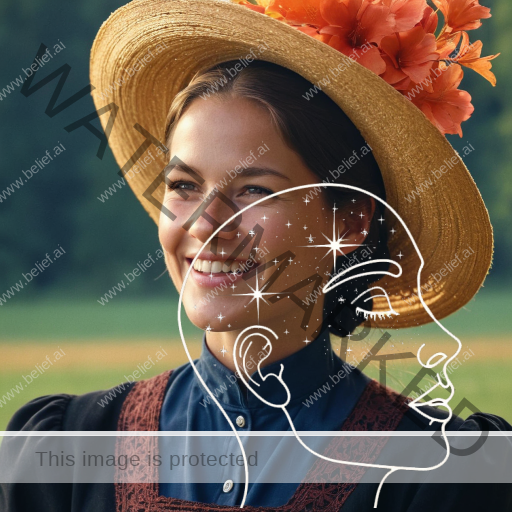The clip-clop of horse hooves striking the pavement, the gentle sway of a traditionally crafted buggy, and the simplicity of a life lived in harmony with nature; these are the sounds and sights that evoke the unique culture of the Amish community. This way of life, so different from our own, can be found in rural America, where fields are tilled by horse-drawn ploughs, and transportation is by horse-drawn buggies. Let us explore the world of the Amish, their history, beliefs, societal structures, and challenges they face in the modern world.
Global Distribution and Demographics
The Amish community is predominantly based in the United States and Canada, with the majority residing in Pennsylvania, Ohio, and Indiana. They are a rapidly growing population, doubling every twenty years due to large family sizes. It’s estimated that there are approximately 350,000 Amish people currently living in North America. However, not all Amish are the same; they are divided into different orders or affiliations, based on their specific beliefs and lifestyle practices. The two main groups are the Old Order Amish, who shun all forms of modern technology, and the less strict Amish affiliations, who permit limited use of modern conveniences.
Despite their North American concentration, the Amish roots trace back to Europe. The first Amish migrated to the United States in the 18th century, seeking religious freedom. Today, there are still remnants of this community in Europe, though they are far fewer in number. The Swiss Amish, for instance, still exist in small pockets, living according to the same principles that guide their North American counterparts.
Origin, Founders, and Key Figures
The Amish community owes its existence to Jakob Ammann, a Swiss Anabaptist leader in the late 17th and early 18th centuries. Ammann’s teachings emphasized humility, simplicity, and community, setting the foundation for the Amish way of life. His followers, known as Amish or “Amish Mennonites,” split from the larger body of Swiss Brethren or Mennonites in 1693. This division happened over issues like the frequency of communion, the social shunning of sinners, and the strictness of dress codes.
Historically, the Amish have lacked centralized leadership, instead favoring local church leaders or bishops. These key figures play a crucial role in governing the community and interpreting the Ordnung, the unwritten code of behavior for the Amish. Besides Ammann, other significant figures include leaders like Christian Schowalter and Moses Beachy, whose teachings have shaped the different Amish affiliations.
Brief History
The Amish tradition began in Switzerland and Alsace during the late 17th century under the leadership of Jakob Ammann. Early followers faced persecution for their beliefs, leading many to migrate to North America in the 18th century. They sought land and religious freedom in the New World, establishing their first communities in Pennsylvania, a colony known for its tolerance of different religious groups.
Over the centuries, the Amish have continued living in rural communities, holding fast to their traditional way of life despite the rapid changes in the surrounding society. Their distinct culture, demonstrated through their dress, language (Pennsylvania German or ‘Pennsylvania Dutch’), and resistance to modern technology, remains a symbol of their commitment to simplicity and community.
Summary of Beliefs
The Amish faith is rooted in the Christian Anabaptist tradition, with a key belief in adult baptism. They believe that individuals should make a voluntary decision to commit themselves to the church, typically around the age of 18. They place high importance on community, humility, and simplicity, shunning vanity, self-promotion, and modern conveniences that could disrupt their close-knit communities.
Key to the Amish belief system is the concept of Gelassenheit, or yielding oneself to the will of God and the community. This concept is manifest in their practices of communal decision-making, mutual aid, and a lifestyle that emphasizes the group over the individual. It also underpins their commitment to pacifism, non-resistance, and forgiveness.
Community and Social Structures

The Amish live in tightly-knit rural communities centered around the church district, a geographical area that includes around 20 to 40 families. Each district has its leaders, including a bishop, two to four preachers, and an elder, who interpret the Ordnung, or guidelines for living, and provide spiritual guidance. The community comes together for Sunday worship, which rotates among the homes of church members, and for social events like barn raisings, quilting bees, and school programs.
Amish social structure is largely egalitarian, with authority vested in the church leaders. Men typically work in farming, carpentry, or other manual trades, while women manage the home and provide childcare. Young people, before joining the church, may experience a period of Rumspringa, during which they are given some latitude to explore the outside world before deciding to commit to the Amish way of life.
Sacred Texts and Writings
The Bible is the central religious text for the Amish, particularly the New Testament, which guides their beliefs and practices. They use the Martin Luther German translation and the King James English version. In addition to the Bible, the Ausbund, a hymnal dating back to the 16th century, is used in their church services. It contains hymns composed by early Anabaptists, many written while the authors were imprisoned for their faith.
The Ordnung, while not a written document, is another significant text in the Amish community. It outlines the community’s expectations for behavior and provides guidelines for everything from clothing and technology use to business practices and social activities. As it is not written down, the Ordnung can vary from community to community and is subject to change based on the decisions of the church leaders.
Ethical Beliefs and Moral Codes
The Amish ethical system is derived from their religious beliefs, emphasizing humility, simplicity, and community. They believe in hard work, integrity, and commitment to community as core values. Non-resistance and forgiveness are also important principles, stemming from their belief in Jesus Christ’s teachings. Hence, the Amish are known for their pacifism, refusing to participate in military service.
They also hold strict moral codes related to modesty and purity. This is evident in their simple dress, prohibition against worldly entertainment, and guidelines for courtship and marriage within the faith. The Amish also believe in helping others, and it’s common for them to engage in acts of service, both within their community and beyond.
Cultural and Social Impact

The Amish way of life has had significant cultural and social impacts, particularly in regions where they are concentrated. Their commitment to simplicity and sustainability has influenced trends in farming, building, and other trades. The Amish have become known for their high-quality, handcrafted goods, from furniture to quilts, which are sought after for their durability and beauty.
Moreover, the Amish have contributed to cultural diversity in the United States, preserving their unique traditions, language, and lifestyle in the face of modernization. Their communities attract tourists who are curious about their way of life and value their craftsmanship. Through their peaceful coexistence, they serve as a reminder of America’s religious tolerance and the nation’s roots in agrarian living.
Contemporary Issues and Challenges
Despite their seclusion, the Amish are not immune to the challenges of the modern world. Rapid population growth has led to a scarcity of farmland, pushing some Amish to seek alternative means of income outside of traditional farming. Technological advancements also pose a challenge, forcing the Amish to negotiate the boundary between maintaining their traditional lifestyle and adapting to shifting economic realities.
In addition, the Amish face issues related to health and education. Limited access to modern healthcare and a traditional educational system that ends at eighth grade present challenges. Yet, the Amish continue to navigate these issues while striving to maintain their unique way of life, an endeavor that is both complex and commendable in today’s rapidly evolving world.
Final Thoughts
Journeying into the world of the Amish is like stepping back in time, a reminder of a simpler era when life was closely tied to the land, and community was at the heart of existence. From horse-drawn buggies to barn raisings, the Amish way of life continues to captivate and inspire with its focus on harmony, humility, and hard work. As the modern world races forward, perhaps there are lessons to be learned from this unique community as we seek a more sustainable, community-focused, and meaningful way of life.
Additional Resources
Exploring the Amish community and their way of life requires a multidimensional approach due to their unique religious beliefs, history, and cultural impacts. Below, I’ve curated a list of resources that cover a broad spectrum of topics related to the Amish. These resources include books, documentaries, and websites that delve into various aspects of Amish life, from their religious doctrines and history to their cultural practices and influences:
- Books:
- “Amish Society” by John A. Hostetler: This classic book provides a comprehensive overview of the Amish culture, including their religious beliefs, community life, and the challenges they face.
- “Rumspringa: To Be or Not to Be Amish” by Tom Shachtman: Focuses on the rite of passage known as Rumspringa, during which young Amish individuals are allowed to experience the outside world before deciding whether to commit fully to their community.
- “Plain Secrets: An Outsider among the Amish” by Joe Mackall: The author shares his experiences living among the Amish, offering insights into their daily lives and cultural practices.
- Documentaries:
- “Devil’s Playground” (2002): This documentary follows several Amish teenagers during their Rumspringa, capturing their struggles and experiences as they decide between the Amish community and the modern world.
- “Amish: A Secret Life” (2012, BBC): Provides a rare insight into the life of an Amish family who opens up their home to the camera, offering a glimpse into their private lives and spiritual beliefs.
- “The Amish” (PBS, American Experience): An exploration of the Amish faith and lifestyle, detailing their origins, beliefs, and how they navigate the modern world.
- Websites:
- Amish America (amishamerica.com): Features articles, interviews, and discussions on various aspects of Amish life, from technology and business practices to religious beliefs and community events.
- The Young Center for Anabaptist and Pietist Studies at Elizabethtown College: Offers academic and scholarly resources on the Amish and related groups, providing insights into their history, culture, and religious practices.
By exploring these resources, you’ll gain a more nuanced understanding of the Amish, from their roots and religious doctrines to the complexities of living in a modern society while maintaining a distinct cultural identity. Each resource offers a different perspective, collectively providing a well-rounded view of the Amish community.
